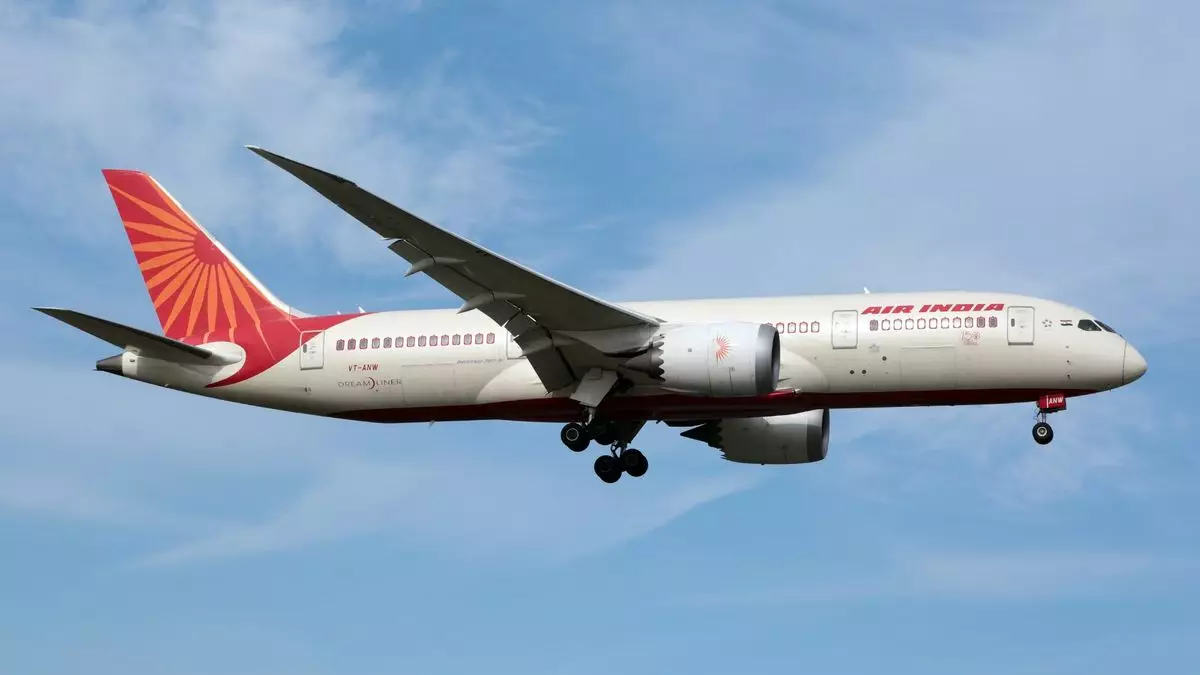Air India, one of the most storied names in aviation, is undergoing a seismic shift under the ownership of the Tata Group. Following years of stagnation characterized by outdated infrastructure and operational inefficiencies, the airline is not only affirming its commitment to a service-oriented approach, but also ambitiously aiming to redefine what it means to be a major carrier in a rapidly changing global context. With the backdrop of India’s flourishing economy and increasing demand for air travel, Air India is poised for a renaissance, but it does face formidable hurdles that could disrupt its trajectory.
CEO Campbell Wilson’s confidence expresses a strategic clarity that resonates with the industry’s optimistic outlook. His recent statement that “Anywhere we point an aircraft, I think we can probably fill it,” reflects a renewed sense of purpose and ambition. This sentiment is echoed by the Tata Group’s substantial investments, which have led to ambitious aircraft orders totaling 570 units—a move indicative of their long-term vision. Merger activities with Vistara and AirAsia India have also given Air India a much-needed lift, bolstering its international presence and enhancing domestic viability in a fiercely competitive market.
Facing Challenges Head-On
Yet, the recent crash of Flight 171—an incident that resulted in the tragic loss of 270 lives—casts a long shadow over these ambitions. As the investigation unfolds, the airline is caught in a precarious situation: their forward momentum now juxtaposed against a backdrop of significant loss and scrutiny. The ramifications of this tragedy could deeply impact public perception and the airline’s evolving identity. Industry experts, including John Strickland, recognize the daunting road ahead. “No airline CEO wants to face a challenge of this magnitude,” he notes, emphasizing that the stakes are particularly high given Air India’s historical baggage of mismanagement and inconsistent service.
A critical examination of Air India’s past reveals years of underinvestment and systemic issues stemming from its lengthy period of state ownership. Wilson’s admission that for the past two decades, there had been no recruitment of crucial non-pilot staff speaks volumes about the institutional inertia that has plagued the airline. Although Tata’s investments and operational overhauls are commendable, the legacy of an underfunded carrier remains a significant barrier to achieving excellence.
Operational Hurdles and Safety Concerns
Despite improvements, Roadblocks persist. With Air India currently ranking in the bottom tier of global carriers for on-time performance—just 68% punctuality in the last fiscal year—the airline has a long way to go. Investments in upgrading IT and customer service systems have shown promise, but the challenge of consistently meeting operational expectations lingers heavily. The merger with Vistara has indeed allowed Air India to enhance its international presence, yet on the domestic front, the airline must elevate its standards to compete effectively against agile low-cost carriers that dominate the sector.
The shadow of Flight 171 raises pressing questions around safety standards. Investigators are expected to spend considerable time analyzing the crash’s causative factors, and the implications of their findings could either improve or tarnish the airline’s reputation. The uncertainty of whether mechanical failure or procedural shortcomings led to the disaster adds salt to the wound. According to aviation experts, should the investigation reveal that safety protocols failed at a management level, the damage to Air India’s image could be catastrophic. How the airline handles public communication and ensures transparency during this period will be crucial for regaining trust.
A Market on the Brink of Booming
Yet, amidst these challenges lies significant opportunity. India is increasingly becoming the focus of international travel, set to surpass Japan as the world’s fourth-largest economy. As growth figures suggest, a burgeoning middle-class demographic is hitting the travel market with an increasing fervor. The gap between current service levels and potential demand presents a compelling opportunity if Air India can harness it efficiently. With the existing infrastructure lagging behind its capabilities, any commitment to modernization or service enhancements could translate to competitive advantages. However, this requires a razor-sharp focus on quality and consistency.
With only 69 widebody aircraft operating in India compared to larger fleets of other international carriers, it is clear that the Indian aviation market is under-resourced. Analysts consistently point to the potential for growth should Air India embrace innovation and efficiency, riding the wave of burgeoning travel demand not just from affluent Indians but also by capturing necessary market share from international competitors.
As Air India responds to the present crisis, its ambition to transform remains crucial. This is not just about the recovery from tragedy; it is about establishing a resilient ethos where the quest for safety, reliability, and customer satisfaction becomes foundational to the airline’s identity. Wilson’s vision, while challenged, can become a catalyst for monumental change if motivated by the tragic lessons of Flight 171. In this complex landscape of opportunities and challenges, the future of Air India will ultimately be determined by its ability to adapt, innovate, and most importantly, learn from adversity.


Leave a Reply